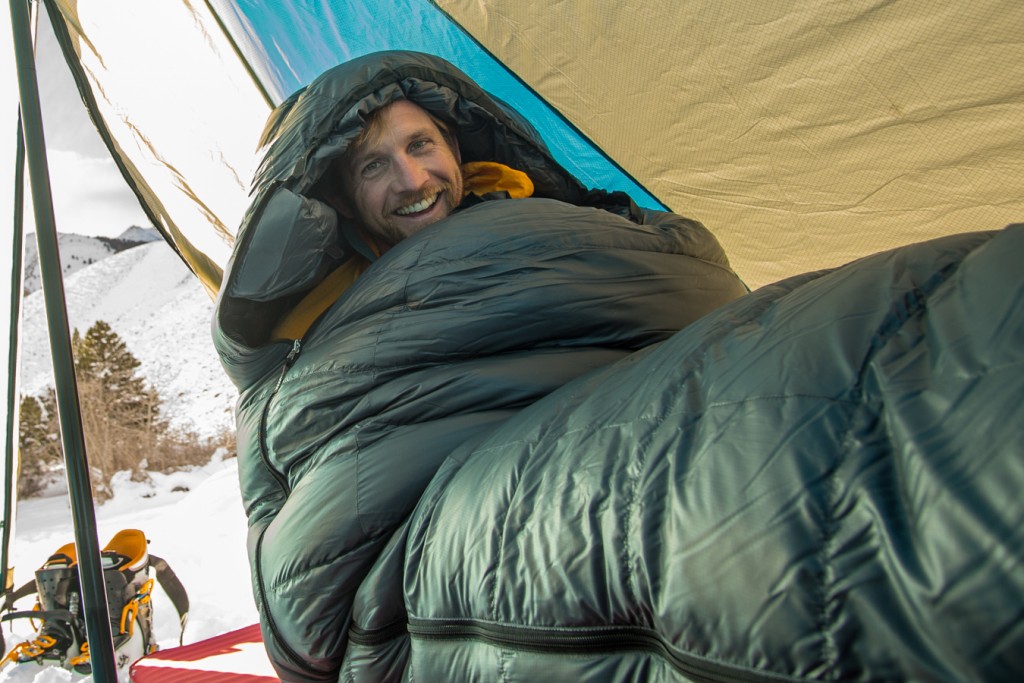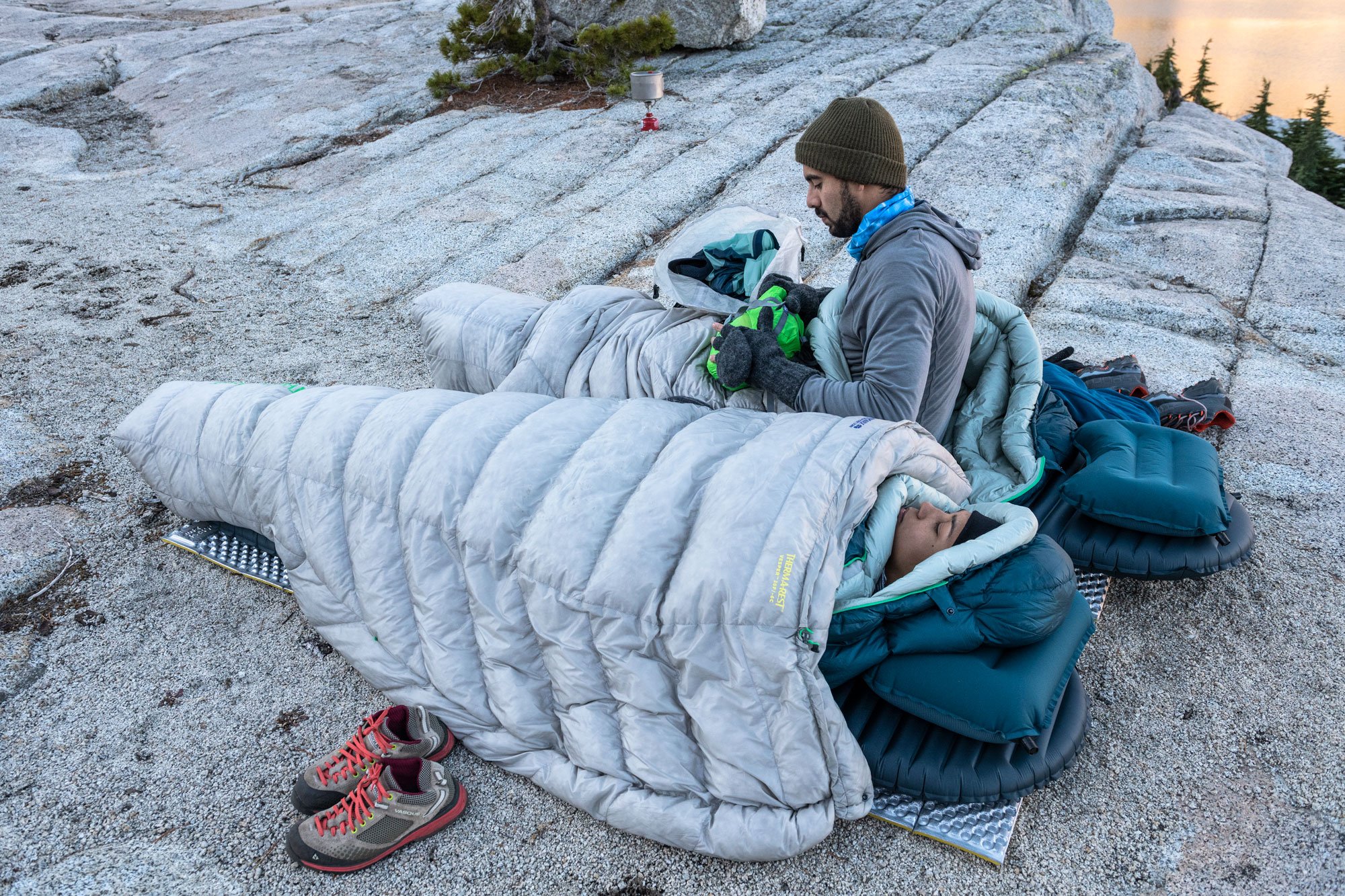Winter is a time for adventure and exploration. Staying warm is crucial during these cold months.
A winter sleeping bag can be your best friend on chilly nights outdoors. Whether camping in the mountains or enjoying a winter hiking trip, the right sleeping bag keeps you warm and comfortable. Designed to withstand freezing temperatures, these sleeping bags offer essential insulation and protection.
They ensure a restful night’s sleep, even in the coldest conditions. In this blog, we explore what makes a winter sleeping bag a must-have for any winter adventurer. We’ll cover key features, materials, and how to choose the right one for your needs. Get ready to discover how a winter sleeping bag can enhance your cold-weather experiences.
Contents
Choosing The Right Winter Sleeping Bag
Choosing the right winter sleeping bag ensures a warm and comfortable night’s sleep. It’s vital for outdoor enthusiasts who brave cold weather. A good sleeping bag can make the difference between a restful night and a sleepless one. Understanding key features like temperature ratings and insulation types helps in making an informed decision.
Temperature Ratings
Temperature ratings indicate the lowest temperature at which a sleeping bag keeps you warm. These ratings guide your choice based on expected weather conditions. Winter sleeping bags often have lower temperature ratings to handle freezing weather. Look for bags rated for extreme cold if camping in snowy regions.
Insulation Types
Insulation types determine how well a sleeping bag retains heat. There are two main types: down and synthetic. Down insulation offers excellent warmth-to-weight ratio but can lose its insulating properties when wet. Synthetic insulation, while bulkier, maintains warmth even when damp. Choose based on your specific needs and preferences.

Credit: www.outdoorgearlab.com
Materials And Construction
Choosing the right winter sleeping bag depends on its materials and construction. The right combination ensures warmth, comfort, and durability. Let’s dive into the key components of a winter sleeping bag.
Outer Shell Fabrics
The outer shell of a winter sleeping bag protects you from the elements. It needs to be durable, water-resistant, and breathable. Common materials include:
- Nylon: Lightweight and strong. Often treated with water-repellent coatings.
- Polyester: Resistant to UV rays and less likely to absorb water.
- Ripstop Fabric: Woven with a special technique to prevent tears from spreading.
These fabrics often have a DWR (Durable Water Repellent) finish. This helps to keep moisture out while allowing sweat to escape. Look for sleeping bags with reinforced stitching in high-wear areas. This adds extra durability.
Inner Linings
The inner lining of a winter sleeping bag affects comfort and warmth. It should be soft, moisture-wicking, and breathable. Common materials include:
- Polyester Taffeta: Smooth and soft. Feels gentle against the skin.
- Brushed Polyester: Adds a plush feel. Ideal for cold nights.
- Fleece: Extra warmth. Perfect for extreme cold conditions.
A good lining wicks moisture away. This keeps you dry and warm. Some bags have insulation layers between the shell and the lining. These layers trap heat and enhance warmth.
| Material | Properties |
|---|---|
| Nylon | Lightweight, strong, water-resistant |
| Polyester | UV resistant, less water absorption |
| Ripstop | Durable, tear-resistant |
| Polyester Taffeta | Smooth, soft |
| Brushed Polyester | Plush, warm |
| Fleece | Extra warmth |
Choosing the right materials ensures a cozy and durable winter sleeping bag. Next time you are shopping, consider these aspects for a better sleeping experience.
Weight And Packability
When selecting a winter sleeping bag, weight and packability are crucial factors. You want a sleeping bag that keeps you warm without being too heavy. It should also be easy to compress and pack.
Lightweight Options
Lightweight winter sleeping bags are ideal for backpacking. They reduce the load you carry. Here are some features to look for:
- Down insulation – Down is lighter and more compressible than synthetic.
- Shell material – Look for lightweight, durable fabrics.
- Design – Mummy bags are often lighter than rectangular ones.
Consider the following lightweight winter sleeping bags:
| Model | Weight | Temperature Rating |
|---|---|---|
| FeatherLite 900 | 2 lbs | -10°F |
| SnowPeak 800 | 2.5 lbs | -5°F |
| ArcticLite 1000 | 3 lbs | -20°F |
Compression Sacks
Compression sacks help reduce the size of your sleeping bag. This makes it easier to pack. Here are some tips:
- Choose a sack that fits your sleeping bag snugly.
- Look for sacks with adjustable straps.
- Ensure the material is durable and water-resistant.
Compression sacks come in various sizes. Here’s a quick guide:
| Size | Recommended Sleeping Bag Weight |
|---|---|
| Small | Up to 2 lbs |
| Medium | 2-3 lbs |
| Large | 3-4 lbs |
Using a compression sack can save space in your backpack. This allows you to carry other essential items.
Credit: www.thermarest.com
Shape And Fit
Choosing the right winter sleeping bag is crucial for warmth and comfort. The shape and fit significantly affect how well your bag will insulate. Let’s dive into the various options available.
Mummy Vs. Rectangular
Mummy sleeping bags are narrower at the feet and wider at the shoulders. This design helps trap heat more effectively. It’s ideal for cold weather camping.
On the other hand, rectangular sleeping bags offer more room to move. They are suitable for those who value space over warmth. Some models can even be unzipped entirely to use as a blanket.
| Feature | Mummy Bag | Rectangular Bag |
|---|---|---|
| Warmth | Excellent | Good |
| Weight | Light | Heavier |
| Space | Limited | Ample |
Size Considerations
When selecting a sleeping bag, size matters. Ensure the bag is long enough for your height. A bag that is too short won’t keep you warm.
Consider the width too. If you move around while sleeping, a wider bag might be better. For those who sleep still, a snug fit is more efficient for warmth.
- Regular size: Fits up to 6 feet
- Long size: Fits up to 6 feet 6 inches
- Wide size: Offers extra room for comfort
Remember, a well-fitting sleeping bag enhances insulation and comfort. Choose wisely for a cozy night’s sleep.
Additional Features
Choosing the right winter sleeping bag can make a significant difference during cold nights. Beyond the basics, certain additional features enhance comfort and warmth. Let’s explore these features, focusing on the hood, draft collar, and zipper quality.
Hood And Draft Collar
A well-designed hood traps heat around your head. This is crucial in cold weather. It helps maintain body warmth. The hood should be adjustable. This allows you to tighten or loosen it as needed. A draft collar sits around the neck area. It stops warm air from escaping and cold air from entering. This feature adds an extra layer of insulation.
Zipper Quality
Zipper quality is another essential aspect. A durable zipper prevents cold air from seeping in. It should operate smoothly without snagging. Look for zippers with anti-snag designs. Double zippers offer more flexibility. You can open the bag from both ends, allowing better temperature control.
Credit: www.amazon.com
Caring For Your Sleeping Bag
Winter sleeping bags are essential for outdoor adventures in cold weather. Keeping your sleeping bag in top condition ensures it lasts longer and keeps you warm. Proper care involves cleaning and storing it correctly. Let’s explore how to care for your winter sleeping bag.
Cleaning Tips
Cleaning your sleeping bag is crucial for maintaining its insulation and comfort. Always check the care label before washing. Use a front-loading washing machine to avoid damage. Choose a gentle detergent designed for down or synthetic materials. Avoid regular laundry soap. It can strip the sleeping bag’s natural oils and reduce its loft.
Set the machine to a gentle cycle with cold water. After washing, rinse thoroughly to remove all detergent. Dry the sleeping bag on a low heat setting. Add clean tennis balls to the dryer. They help to restore the loft and fluffiness.
Storage Advice
Proper storage extends the life of your sleeping bag. Never keep it in a compressed state for long periods. Store it in a large, breathable cotton sack. This prevents the insulation from being permanently compressed. It also allows the sleeping bag to maintain its loft.
Keep the storage sack in a cool, dry place. Avoid damp areas to prevent mold and mildew. Regularly air out your sleeping bag to keep it fresh. Following these steps ensures your sleeping bag stays in excellent condition for your next winter adventure.
Top Brands To Consider
Choosing the right winter sleeping bag is crucial for a comfortable night’s sleep in the cold. With so many brands available, it can be hard to choose. This guide will help you find top brands that offer quality, warmth, and comfort.
Popular Choices
Several brands stand out in the market for winter sleeping bags. The North Face is known for its durable and warm designs. Marmot offers bags with high-quality insulation. REI Co-op provides affordable yet reliable options. These brands ensure you stay warm even in freezing conditions.
Customer Reviews
Customer reviews can provide valuable insights into the performance of winter sleeping bags. The North Face bags often receive praise for their robust build and warmth. Marmot users appreciate the comfort and insulation. REI Co-op bags get good reviews for their value for money. Reading reviews can help you make an informed decision.
Budget-friendly Options
Winter sleeping bags are essential for outdoor enthusiasts. They keep you warm and comfortable during cold nights. But finding a good winter sleeping bag on a budget can be challenging. Luckily, there are many budget-friendly options available. Let’s explore some of them.
Affordable Picks
Many brands offer affordable winter sleeping bags without compromising on quality. Here are some great options:
- REDCAMP Sleeping Bag: This bag is lightweight and costs under $50. It provides warmth down to 20°F.
- REI Co-op Siesta 30: Priced around $60, it’s perfect for mild winter conditions. It offers comfort and durability.
- Kelty Tuck 22: This bag is priced at $70. It features a thermal-comfort hood and offers warmth down to 22°F.
Value For Money
Getting the best value for your money is important. Here are some sleeping bags that offer excellent features at a budget-friendly price:
| Brand | Model | Price | Temperature Rating |
|---|---|---|---|
| REDCAMP | REDCAMP Sleeping Bag | $50 | 20°F |
| REI Co-op | Siesta 30 | $60 | 30°F |
| Kelty | Tuck 22 | $70 | 22°F |
These options ensure you get the best features without breaking the bank. Look for features like insulation, lightweight, and durability.
Choosing the right winter sleeping bag on a budget is possible. Focus on key features to make an informed decision. Happy camping!
Frequently Asked Questions
What Temperature Rating Should A Winter Sleeping Bag Have?
A winter sleeping bag should have a temperature rating of -10°F to 0°F. This ensures warmth in cold conditions.
How To Choose The Right Size For A Winter Sleeping Bag?
Choose a size that matches your height. Also, ensure it’s snug but not too tight for better insulation.
Can You Use A Winter Sleeping Bag In Summer?
Using a winter sleeping bag in summer may cause overheating. It’s best to use a season-appropriate bag.
Conclusion
Choosing the right winter sleeping bag makes all the difference. It keeps you warm during cold nights outdoors. Comfort and warmth matter most for a good night’s sleep. Always check the temperature rating before you buy. Look for materials that provide insulation and are lightweight.
Investing in a quality sleeping bag ensures many cozy nights. Stay prepared and enjoy your winter adventures. A good sleeping bag is your best friend in the cold. Make the right choice and sleep well.


